Canon EF 14 mm f/2.8L USM II
3. Build quality
The photo below shows the Canon 2.8/14 next to the ultra wide angle Sigma 12-24 mm II and the Sigma 1.4/30, designed for smaller detectors.
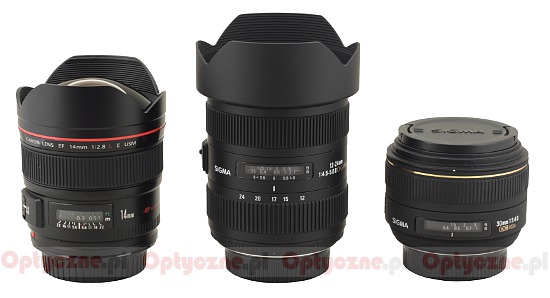 |
Please Support UsIf you enjoy our reviews and articles, and you want us to continue our work please, support our website by donating through PayPal. The funds are going to be used for paying our editorial team, renting servers, and equipping our testing studio; only that way we will be able to continue providing you interesting content for free. |
- - - - - - - - - - - - - - - - - - - - - - - - - - - - - - - - - - - - - - - - - - - - - - - -
The lens starts with a metal mount with contacts, inside which there is a rear element 22 mm in diameter. The element is mobile and changes its position in the distance of about 3 mm. The movement is so slight that it doesn’t cause any gaps or openings so the lens from the mount’s side remains sealed all the time. The front element is extended the most at infinity and it hides inside the barrel when the focus is set at minimum focus.
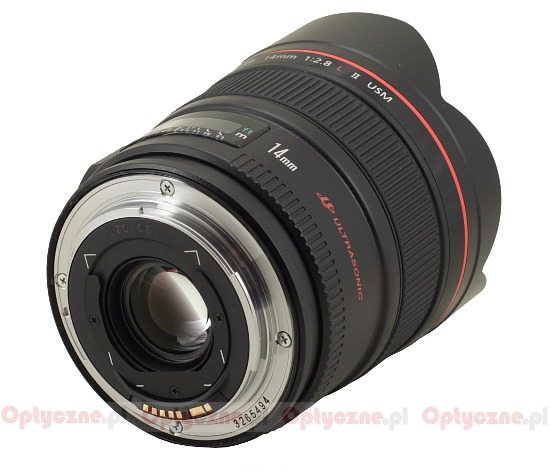 |
The proper barrel is made of magnesium alloys painted black. Immediately behind the mount we find a red dot which makes the right attachment to the body easier. Then there is a distance scale behind a window, expressed in feet and meters. Right behind it we get a depth of field scale with the following aperture markings: f/22, f/16, f/11 and f/5.6. On the left side of the scale, looking from above, there is a focusing mechanism AF/MF switch.
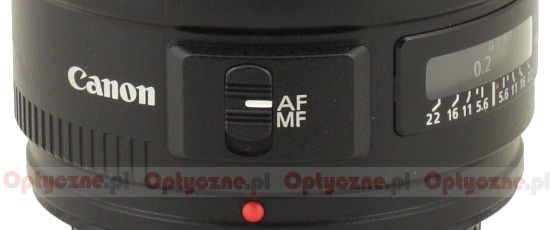 |
The next part of the lens consists of a manual focus ring which is ribbed, rubber-covered and 18 mm wide. It moves smoothly but is well-damped. Running through the whole distance scale takes a turn through 90 degrees.
Further on, you can find a metal ring with a red stripe, so characteristic for L-series instruments, the name and the parameters of the lens, and the information that it was made in Japan. That ring passes smoothly into a build-in lens hood which surrounds a huge convex front element being 64 mm in diameter. A big front cap is put directly on the hood.
When it comes to the optical construction we deal here with 14 elements positioned in 10 groups. The producer boasts of two aspherical elements and two low-dispersion UD glass elements as well. Inside you can also find an aperture with six diaphragm blades which can be maximally closed to f/22.
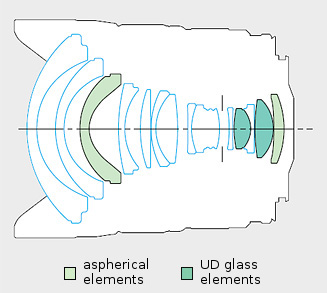
The buyer gets both caps, a soft pouch and a CD with software in the box.
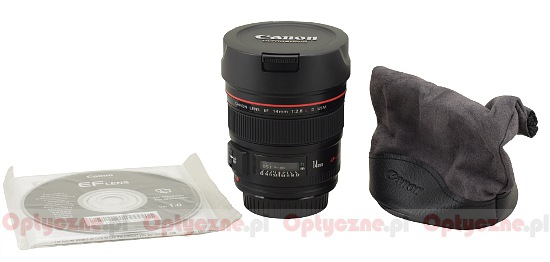 |






